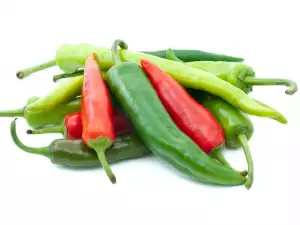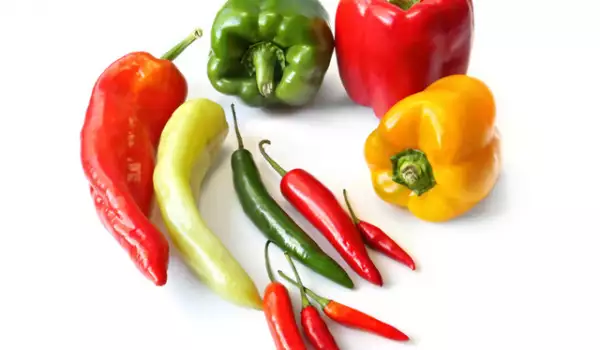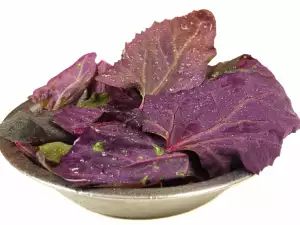Peppers, also known as sweet peppers belong to the family Capsicum. Peppers, sweet varieties, and hot peppers come from Central and South America. It is believed that the peppers were brought to Europe by Christopher Columbus, who gave the Spanish Queen Isabella seeds from them.
At first green peppers were only used, then red, and finally - yellow and orange. Only twenty years after the peppers were known to the old world, people began to use them for food and spice. Commercial pods begin to be produced in South America in 1925
Types of peppers
Peppers can be divided into two main categories - sweet bell peppers and spicy peppers, also called chilies. The difference in these two types stems from the substance capsaicin in chili peppers that is not contained in sweet pepper.
Peppers of this sort sre known as sweet peppers or green/red peppers. Depending on the degree of ripeness and their variety, the colors of peppers vary to orange, yellow, red, purple, brown, black, ivory and green. Their sweetness also varies. Green types of peppers remain green throughout the ripening process, while other types have discoloration. Yellow and orange peppers are similar in flavor and juiciness. The largest exporters of pepper are in Europe France, Cyprus, Italy and Spain.

Composition of Peppers
All kinds of peppers are an excellent source of vitamin C. Sweet green peppers contain twice as much vitamin C than oranges, while red and yellow peppers contain three or four times your daily dose of vitamin C. The peppers also contain vitamin B6, phytochemicals such as lycopene and beta-carotene (precursor of vitamin A ), foliates, potassium and plenty of fiber.
In 100 g of peppers 2.13 g magnesium, 10 mg calcium, 24 mg phosphorus, iron, niacin, tryptophan and sugars are contained. Peppers are characterized by very high levels of zinc, which is two times larger than that in cucumber, lettuce, squash and tomatoes.
Chili peppers contain an additional substance called capsaicin. This substance makes the peppers hot to taste, creating a strong burning sensation in the mouth.
Selection and storage of peppers
Peppers are available year-round. They should be selected well formed, firm and glossy, which should feel heavy for their size. You should avoid those that are soft, shriveled or have features of cracks and stains. Only hot peppers have these features on them.
Storage of peppers requires that they are wrapped in paper or cloth bags and kept in the refrigerator to preserve their freshness for up to 5 days for sweet peppers and 3 weeks for hot peppers. Before cooking the peppers, they should be washed to remove the wax, which spreads on their surfaces.

Culinary use of peppers
Peppers can be eaten both raw as snacks or salads, and be prepared on a barbecue, baked, steamed or fried. This vegetable is very easy to process and only needs to be cleaned from the stems and seeds before use. They are delicious both raw and cooked. The sweet flavor is stressed when cooked or pickled. They are often used in soups, vegetable and meat dishes, stuffed with minced meat and rice on an omelet or pizza.
Dried peppers are used to make paprika - both sweet and bitter. It is an indispensable spice for flavor and keeps the valuable properties of peppers, even during the cold months. The world is familiar with the names chili and paprika.
Benefits of Peppers

Capsaicin is most concentrated in the white membrane of peppers. It has many health benefits, including:
- Used to effectively treat physical pain and inflammation like arthritis, psoriasis, diabetic neuropathy;
- Reduces the risk of heart attack and brain stroke as it helps to reduce the levels of cholesterol and prevents the formation of blood clots;
- Clears the nasal tract and prevents overloading of the lungs;
- Prevents prostate cancer by inhibiting the growth of cancer cells;
- Prevents stomach ulcers by killing bacteria in the stomach;
- Helps to reduce weight because it speeds up the body's metabolism, suppress appetite;
- Helps to lower the risk of diabetes by controlling blood sugar.
Peppers are recommended in accordance with the low-calorie diets for obesity, hypertension, diseases of the cardiovascular system, liver and biliary tract. They are useful in chronic constipation, but when there is no inflammation. It is recommended to consume them without seeds.
Dangers of peppers
Sometimes peppers are not tolerated by people who have digestive problems. Eating peppers is not recommended in inflamed hemorrhoids, acute gastritis and enterocolitis.





















